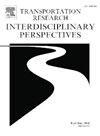A stacked ensemble model for traffic conflict prediction using emerging sensor data
IF 3.8
Q2 TRANSPORTATION
Transportation Research Interdisciplinary Perspectives
Pub Date : 2025-05-01
DOI:10.1016/j.trip.2025.101457
引用次数: 0
Abstract
Over recent decades, a plethora of Safety Surrogate Measures (SSMs) have emerged as valuable metrics for predicting traffic conflicts. However, existing research predominantly focuses on conflict prediction at junctions or relies on a single SSM, such as time-to-collision, for detecting vehicle-related conflicts. This limitation highlights the challenge of selecting appropriate SSMs for vehicle- or segment-based conflict prediction, considering the diverse range of factors influencing conflict outcomes. To address this gap, this study leverages data collected from various infrastructure and vehicle-based sensors, including drones, lidars, radars and cameras, across different scenarios in China and the UK: urban junctions, motorway segments and vehicle-based data from instrumented vehicles. Employing machine learning approaches to handle the extensive and disaggregated data, a novel stacked ensemble learning model is proposed. This model integrates a Random Forest (RF), three-layer Deep Neural Networks (DNN), Support Vector Machine Radial (SVM-R), and a Gradient Boosting Model (GBM) meta layer to enhance prediction accuracy. The Recursive Feature Elimination (RFE) algorithm is then employed to identify the most influential SSMs for conflict prediction in each scenario. Results demonstrate the superiority of the stacked ensemble learning model, achieving accuracies of 88 % for junctions, 87.5 % for motorway segments and 99 % for vehicle-based conflicts. Furthermore, the study highlights the necessity of employing different SSMs for conflict detection in various scenarios. These findings hold significant implications for roadway operators and vehicle manufacturers, aiding in the development of strategies to detect infrastructure and vehicle-related traffic conflicts.
基于新兴传感器数据的交通冲突预测的叠加集成模型
近几十年来,大量的安全替代措施(SSMs)已经成为预测交通冲突的有价值的指标。然而,现有的研究主要集中在路口的冲突预测上,或者依赖于单一的SSM(如碰撞时间)来检测与车辆相关的冲突。考虑到影响冲突结果的各种因素,这一限制突出了为基于车辆或路段的冲突预测选择合适的ssm的挑战。为了解决这一差距,本研究利用了从各种基础设施和基于车辆的传感器收集的数据,包括无人机、激光雷达、雷达和摄像头,这些数据来自中国和英国的不同场景:城市路口、高速公路路段和基于仪表车辆的车辆数据。采用机器学习方法处理大量分解的数据,提出了一种新的堆叠集成学习模型。该模型结合随机森林(RF)、三层深度神经网络(DNN)、支持向量机径向(SVM-R)和梯度增强模型(GBM)元层来提高预测精度。然后采用递归特征消除(RFE)算法来识别每个场景中对冲突预测最具影响力的ssm。结果证明了堆叠集成学习模型的优越性,路口的准确率为88%,高速公路段的准确率为87.5%,车辆冲突的准确率为99%。此外,该研究强调了在不同场景下采用不同的ssm进行冲突检测的必要性。这些发现对道路运营商和车辆制造商具有重要意义,有助于制定检测基础设施和车辆相关交通冲突的策略。
本文章由计算机程序翻译,如有差异,请以英文原文为准。
求助全文
约1分钟内获得全文
求助全文
来源期刊

Transportation Research Interdisciplinary Perspectives
Engineering-Automotive Engineering
CiteScore
12.90
自引率
0.00%
发文量
185
审稿时长
22 weeks
 求助内容:
求助内容: 应助结果提醒方式:
应助结果提醒方式:


